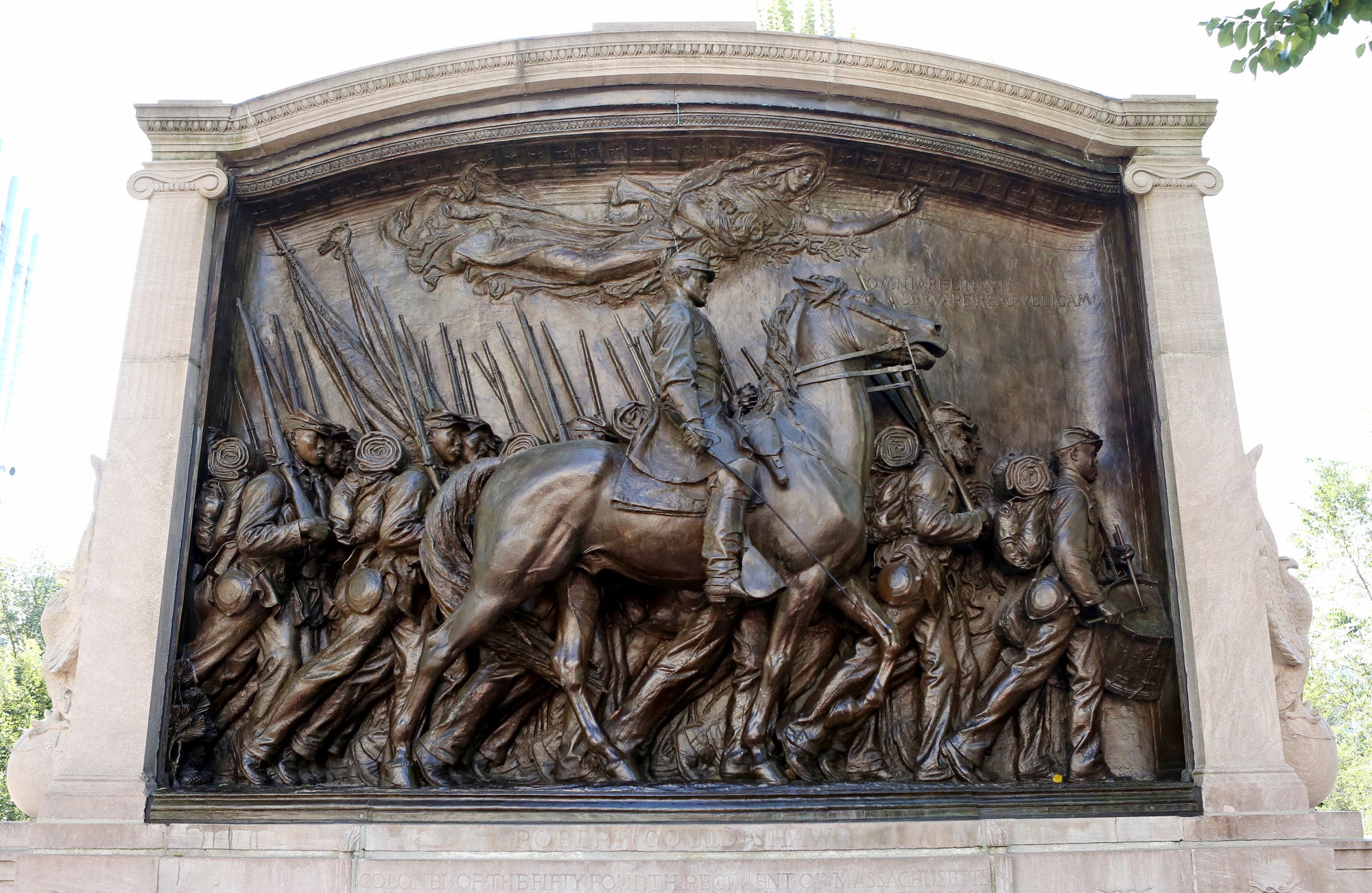
After 3 years and a $3 million restoration project, a monument on the Boston Common honoring a famous unit of Black Civil War soldiers was rededicated on Wednesday.
Many cinephiles are familiar with the Oscar winning movie Glory, which was based on the true story of “abolitionist Union Colonel Robert Gould Shaw and the famous, fully authorized, all-volunteer Black Civil War 54th Massachusetts Infantry Regiment,” to which the monument pays tribute.
Civil war reenactors were present at the ceremony, in addition to prominent military and civic leaders, including Governor Charlie Baker, Mayor Michelle Wu, and Dr. Ibram X. Kendi, How to Be an Antiracist author. Friends of the Public Garden, the city of Boston, and the National Park Service helped to fund the restoration.
In the late 1800s, Augustus Saint-Gaudens, an American sculptor, worked diligently to create the monument, and it was finally unveiled 14 years after the project was initiated in 1897, and showed “Colonel Shaw leading the regiment down Beacon Street to join Union forces in the South.”
The back of the monument has an inscription to inform viewers about the significance of the Black soldiers’ participation since they “risked possible capture and enslavement, and were not paid for the first 18 months of their service.”
The memorial has only been restored on one other instance “in the 1980s, when the names of the Black soldiers killed in action were etched onto the monument. Originally, the memorial only listed the white officers who were killed.”
Earlier this year, Erin Thompson, a professor at John Jay College of Criminal Justice, spoke with WGBH on the tall bronze relief, “The Robert Shaw Memorial [i]s one of the few representations of African Americans in uniform, as soldiers, and it’s mind blowing that this is such an exception…But at the same time, it’s ‘the Shaw Memorial,’ it’s not ‘the 54th Regiment Memorial’…[E]ven here in Massachusetts, the legacy of Black soldiers has been forgotten.”
Their conversation also specifically touched on the significance of statues during times of political unrest, stating “if works of art are representing who we want to be as a community, if they’re in our public spaces, they should really be a product of democratic discussion…And when Americans in power keep statues up while ignoring calls for their removal or even for their debate or change, that’s also undemocratic.”
In recent years the work has encountered scrutiny, especially amidst the racial reckoning our country experienced during the wake of George Floyd’s murder—“It depicts Shaw, the unit’s white commanding officer, riding on horseback while his Black soldiers walk in the background — a dynamic that some have suggested is problematic.”
However, discussions around the subservient design have “been muted because the memorial’s creation in the aftermath of the Civil War was championed by prominent Black Bostonians of the day. The monument is the nation’s first honoring Black soldiers.”